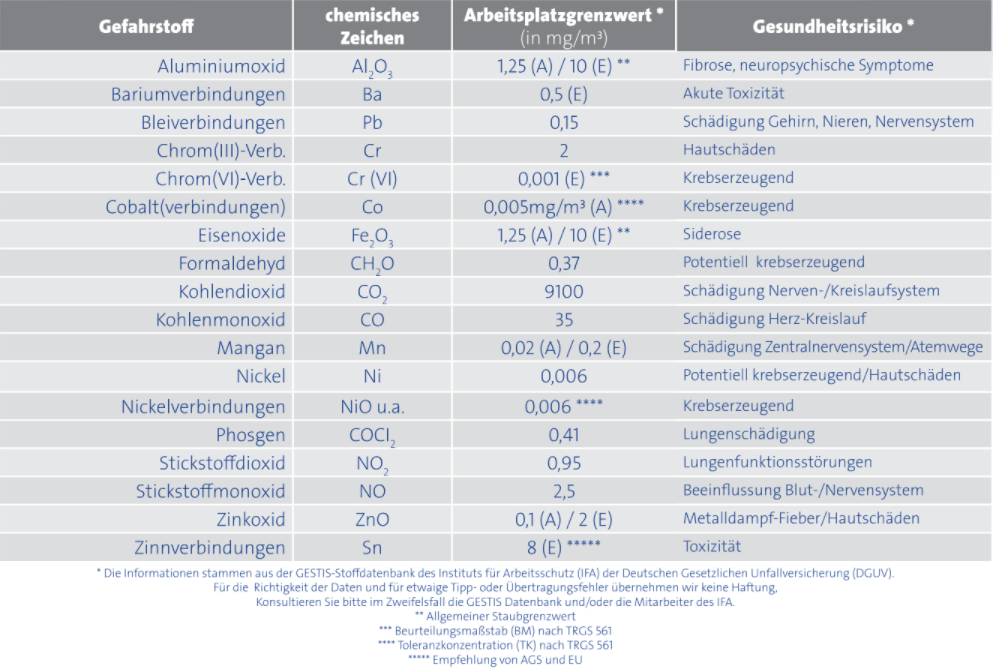Laws & standards

Welding fume extraction - the new regulations
The state framework regulation Hazardous Substances Ordinance (GefStoffV)
The Hazardous Substances Ordinance, which came into force at the beginning of 2005 and in a new version in 2010, reorganised occupational health and safety for activities involving hazardous substances by implementing several EC directives. The Hazardous Substances Ordinance applies to welding fumes, for example, as welding fumes are categorised as hazardous substances by the Technical Rules for Hazardous Substances (TRGS) 528.
The welding fume particles are inhalable and respirable; in the case of chromium-nickel steels, they are carcinogenic. The Hazardous Substances Ordinance 1 requires local extraction: "Dusts must be collected as completely as possible at the point of emission or origin and disposed of safely. The extracted air must be channelled in such a way that as little dust as possible enters the breathing air of employees. The extracted air may only be returned to the work area if it has been sufficiently cleaned." It also states: "Equipment for separating, collecting and precipitating dust must be state of the art. When these devices are put into operation for the first time, their sufficient effectiveness must be checked. The equipment must be checked at least once a year to ensure that it is functioning properly, maintained and, if necessary, repaired. The recorded results of the tests in accordance with sentences 2 and 3 must be retained." (Annex I No.2 , § 2.3, paragraph 5 and paragraph 7)
Air recirculation when handling carcinogenic substances
"If activities involving carcinogenic, mutagenic or fertility-threatening hazardous substances of categories 1 and 2 are carried out in a work area, the air extracted there must not be returned to the work area. This does not apply if the air is sufficiently purified of such substances using procedures or equipment recognised by the authorities or the statutory accident insurance institutions. The air must then be channelled or purified in such a way that carcinogenic, mutagenic or fertility-endangering substances do not enter the breathing air of other employees." (Section 10 GefStoffV, paragraph 5)
If the welding fumes contain carcinogenic components - such as nickel compounds or chromates - the exhaust air must be discharged outside. In exceptional cases, the clean air can be recirculated. The requirements of TRGS 560 3 "Technical rules for hazardous substances - Air recirculation during activities with carcinogenic, mutagenic and fertility-endangering dusts" must be met.
Tips for users
Both mobile dust extractors and centralised stationary systems are available for operators to comply with the regulations. IFA-tested (formerly BGIA) dust extractors (in accordance with the internationally applicable standard DIN EN ISO 21904) and centralised systems in accordance with TRGS 528 meet the legal requirements
Extract from TRGS 528 - Welding work (version 07.08.2020)
4.5 Air recirculation (1) Extracted air may only be returned to the work area if it is sufficiently cleaned. Sufficient purification of welding fumes without carcinogenic, germ cell mutagenic or reprotoxic substances exists, for example, if ventilation systems are used to separate welding fumes that comply with the standard DIN EN ISO 21904 Part 1.
Section 4.5 (4) also applies to systems used to separate fumes containing carcinogenic, germ cell mutagenic or reprotoxic substances.
(4) At workplaces where welding work involving the emission of carcinogenic, germ cell mutagenic or reprotoxic substances of category 1A or 1B is carried out (in particular where materials containing chromium and nickel are used), air extracted there must not be recirculated as a matter of principle. If possible, the extracted air should be recirculated in exhaust mode in these cases, e.g. for stationary workplaces. If welding fume extraction units must be operated in recirculation mode, e.g. for mobile workplaces, only units recognised by the authorities or the statutory accident insurance institutions that have been tested in accordance with DIN EN ISO 21904 Parts 1 and 2 and are labelled W3 may be used. These welding fume extraction devices must also be used for radioactive substances in welding fumes (thorium dioxide). Filter towers are generally unsuitable for capturing these hazardous substances, see also section 4.4.2 paragraph 6.

